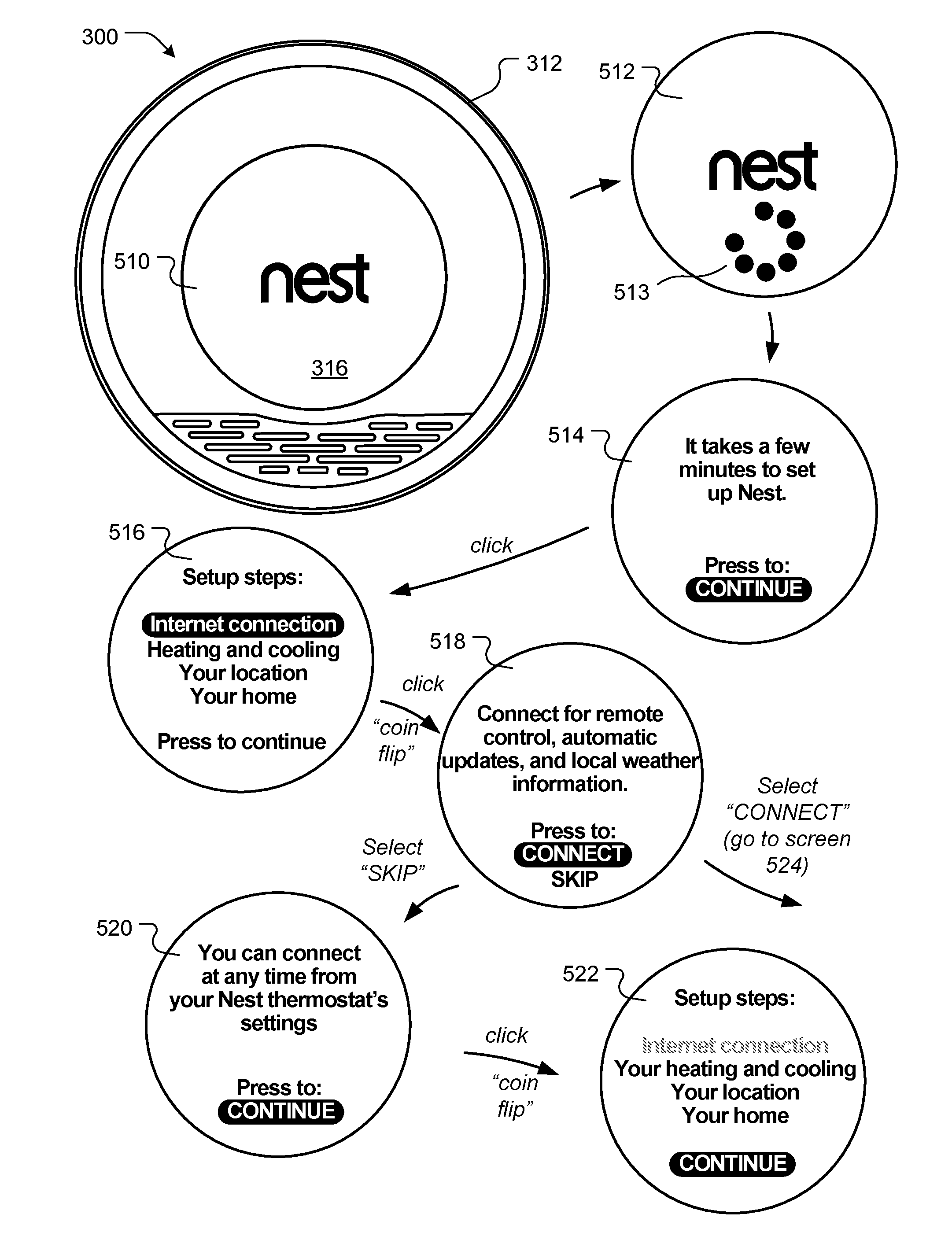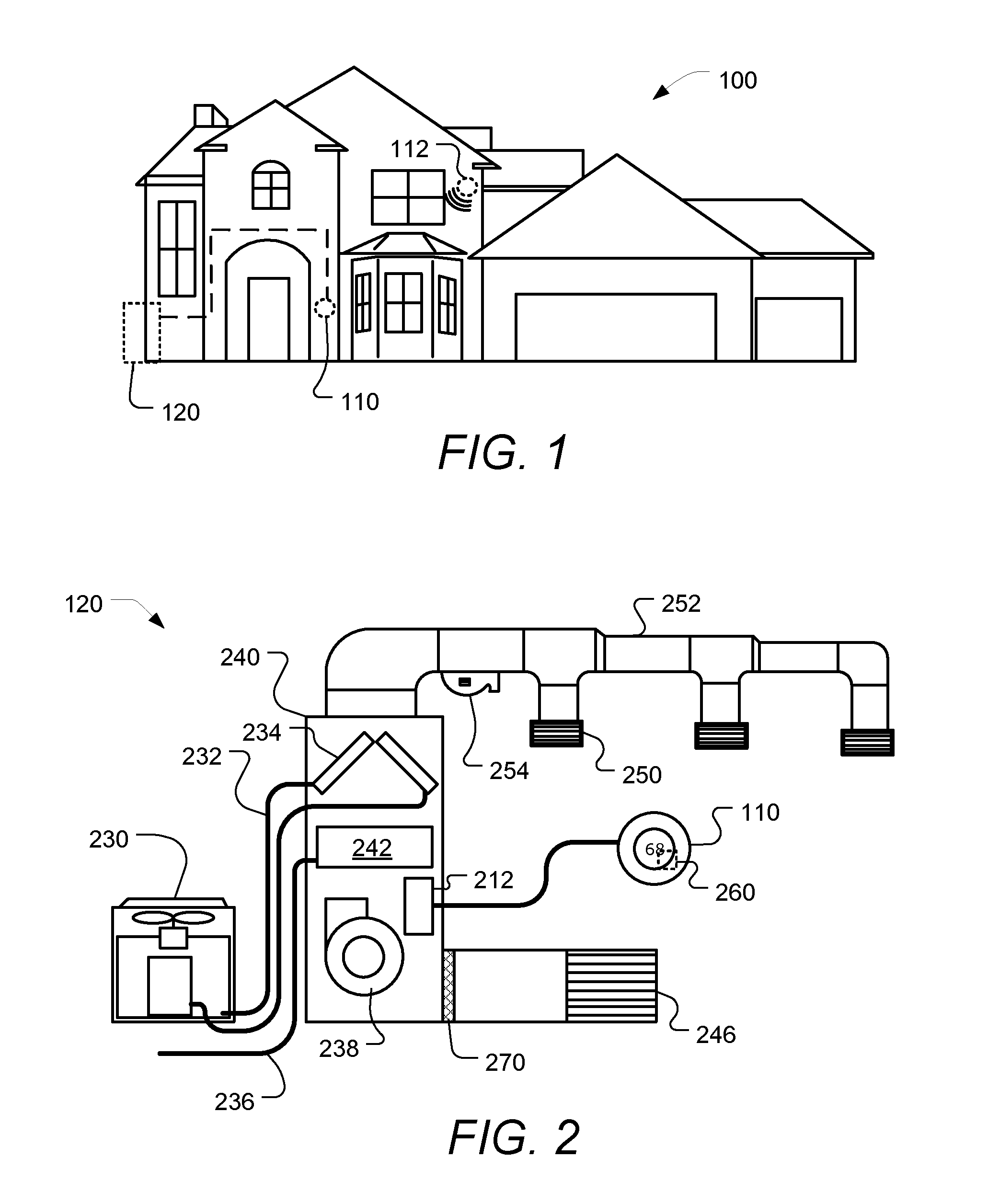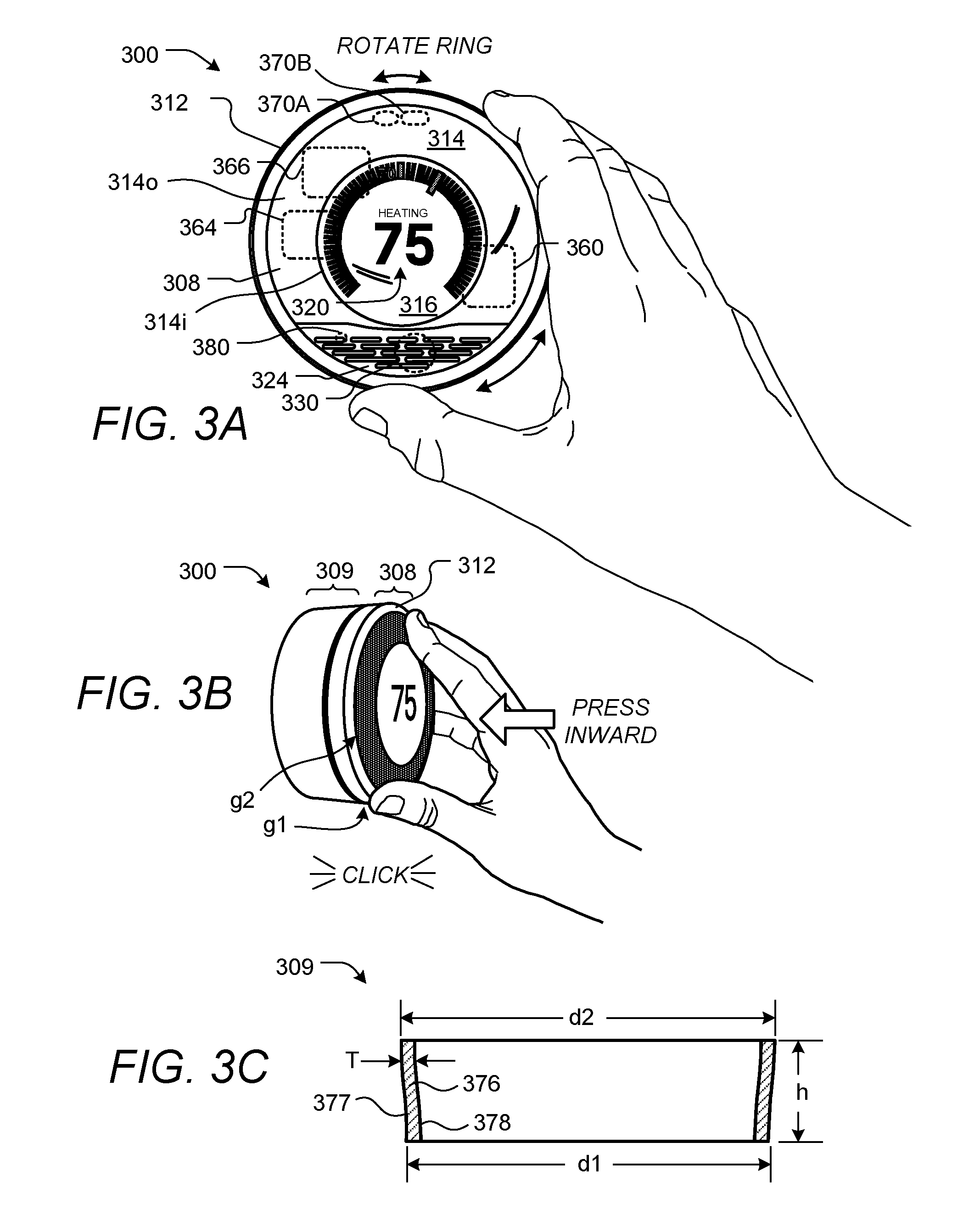Systems and Methods for Energy-Efficient Control of an Energy-Consuming System
a technology of energy-consuming systems and energy-efficient control, applied in the direction of instruments, heating types, static/dynamic balance measurement, etc., can solve the problems of substantial latency, blockage of hvac operation, immediate, delayed or long-term consequence, etc., and achieve the effect of less energy-efficient and efficient control of energy-consuming systems
- Summary
- Abstract
- Description
- Claims
- Application Information
AI Technical Summary
Benefits of technology
Problems solved by technology
Method used
Image
Examples
example 1
[0269]A thermostat is provided. Thermostat settings can be explicitly adjusted by a user or automatically learned (e.g., based on patterns of explicit adjustments, motion sensing or light detection). The thermostat wirelessly communicates with a central server, and the central server supports a real-time interface. A user can access the interface via a website or app (e.g., a smart-phone app). Through the interface, the user can view device information and / or adjust settings. The user can also view device information and / or adjust settings using the device itself.
[0270]A feedback criterion indicates that a leaf icon is to be displayed to the user when the user adjusts a heating temperature to be two or more degrees cooler than a current scheduled setpoint temperature. A current scheduled setpoint temperature is 75 degrees F. Using a rotatable ring on the thermostat, a user adjusts the setpoint temperature to be 74 degrees F. No feedback is provided. The device nevertheless transmits...
example 2
[0272]A computer is provided. A user can control the computer's power state (e.g., on, off, hibernating, or sleeping), monitor brightness and whether accessories are connected to and drawing power from the computer. The computer monitors usage in five-minute intervals, such that the computer is “active” if it receives any user input or performs any substantive processing during the interval and “inactive” otherwise.
[0273]An efficiency variable is generated based on the power used by the computer during inactive periods. The variable scales from 0 to 1, with 1 being most energy conserving. A feedback criterion indicates that a positive reinforcement or reward icon is to be displayed each morning to the user when the variable is either about 0.9 or has improved by 10% relative to a past weekly average of the variable.
[0274]On Monday, a user is conscientious enough to turn off the computer when it is not in use. Thus, the variable exceeds 0.9 and a positive message is displayed to the ...
example 3
[0275]A vehicle component is provided that monitors acceleration patterns. A feedback criterion indicates that a harsh tone is to be provided if a user's cumulative absolute acceleration exceeds a threshold value during a two-minute interval. Two-minute intervals are evaluated every 15 seconds, such that the intervals overlap between evaluations. The criterion further indicates that a loudness of the tone is to increase as a function of how far the cumulative sum exceeds the threshold value.
[0276]The user encounters highway traffic and rapidly varies the vehicle's speed between 25 miles per hour and 70 miles per hour. He grows increasingly frustrated and drives increasingly recklessly. The tone is presented and becomes louder as he drives.
[0277]Specific details are given in the above description to provide a thorough understanding of the embodiments. However, it is understood that the embodiments may be practiced without these specific details. For example, circuits may be shown in ...
PUM
 Login to View More
Login to View More Abstract
Description
Claims
Application Information
 Login to View More
Login to View More - R&D
- Intellectual Property
- Life Sciences
- Materials
- Tech Scout
- Unparalleled Data Quality
- Higher Quality Content
- 60% Fewer Hallucinations
Browse by: Latest US Patents, China's latest patents, Technical Efficacy Thesaurus, Application Domain, Technology Topic, Popular Technical Reports.
© 2025 PatSnap. All rights reserved.Legal|Privacy policy|Modern Slavery Act Transparency Statement|Sitemap|About US| Contact US: help@patsnap.com



